‘Extraordinary’ archaeological finds from Trumpington
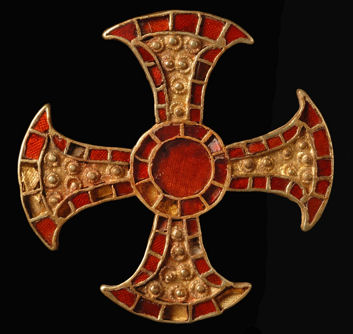
An Anglo-Saxon bed burial and gold and garnet cross (the ‘Trumpington Cross’), was discovered in 2011 during the Cambridge Archaeological Unit excavation at Trumpington Meadows.
Original announcement, 2012
The University of Cambridge announced details of the archaeological finds from Trumpington Meadows in 2012. There is a press release about the finds (including a link to a video on YouTube of the excavation and a discussion of its significance and another link to a series of photographs on Flickr).
In the video, Alison Dickens and Dr Sam Lucy talk about the very rare Saxon bed burial found within the area of the original Anglo-Saxon settlement, just to the south of the later church. This alone is a find of national significance, but more remarkably the burial included a very rare solid gold pectoral cross inlaid with garnets. There are only 5 similar examples of this cross, 1 of which was found in St Cuthbert’s coffin now in Durham Cathedral and may have been his personal cross. This is an explicitly Christian find from the later 7th century at a time when the religion was being newly introduced. The burial is of a girl, possibly aristocratic. The grave is part of a contemporary settlement and may be linked to a monastic foundation, although there is no written evidence of this. Dr Sam Lucy is quoted as saying “To be buried in this elaborate way with such a valuable artefact tells us that this girl was undoubtedly high status, probably nobility or even royalty”.
The press release says “There may even be a possible link to the founding of the first monastery in Ely at around the same time. St Æthelthryth (or Etheldreda), daughter of King Anna of East Anglia, established the female-headed house at Ely in 673 AD. A cemetery found in Ely by the CAU in 2006 also contained a later 7th-century burial of a 10-12 year-old with a delicate gold cross pendant, who was thought to have been associated with the monastery. The parallels between this site and Trumpington are intriguing, and suggest a more interesting origin for the village than has previously been thought.”
Local History Group visits and talks
See the report on the Local History Group site visit in May 2011.
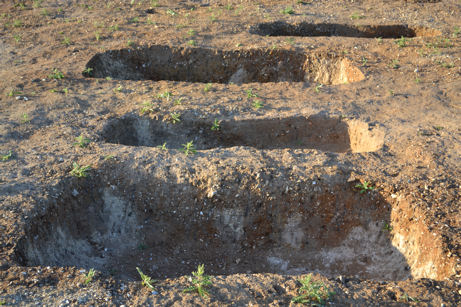
Alison Dickens gave talks to the Local History Group about the Trumpington Meadows excavation and the Trumpington Cross on 11 April 2013 and 9 May 2019. Dr Sam Lucy gave a talk to the Group about the Cross and its context on 23 February 2023 and this has the most recent information.
Finds in the Museum of Archaeology and Anthropology
The Anglo-Saxon gold and garnet ‘Trumpington Cross’ and other items found with the bed burial in 2011 during the Trumpington Meadows excavation were donated to the Museum of Archaeology and Anthropology in Downing Street in 2017. See the museum records for the Trumpington Cross.
The cross and other items were on temporary display in 2018-19 (see University announcement, February 2018). From June 2023, they are in a new exhibition (see below)
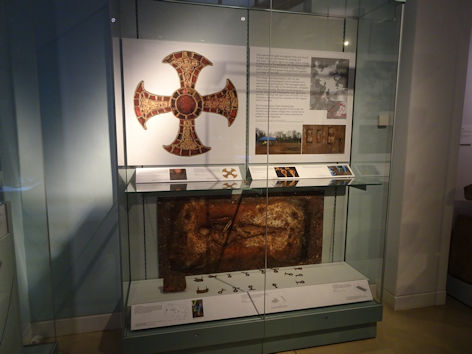
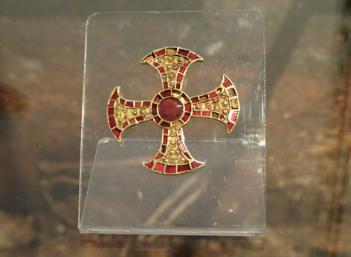
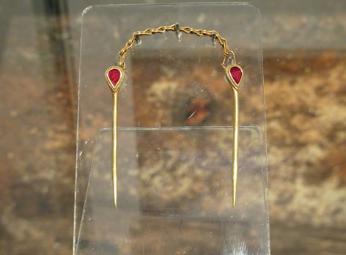
Exhibition in the Museum of Archaeology and Anthropology, 2023-24
From 21 June 2023 to 14 April 2024, new evidence about the bed burial and cross are a highlight of an exhibition in the Museum of Archaeology and Anthropology, Beneath our Feet: Archaeology of the Cambridge Region. The exhibition has a reconstruction of the bed burial, with some of the most important finds placed in position, including the cross, pins and other grave goods. It also includes a forensic artist’s likeness of the teenage girl. Following isotopic analysis of her bones and teeth, it is thought that she moved to Britain as a young girl, around 7 years old, probably from the area that is now Germany, and she was around 16 years old when she died. The evidence from the excavation shows that the community at that time (7th century AD) had inhabitants who raised sheep, kept chickens and grew crops, spun wool, played board games and gathered in a large hall.
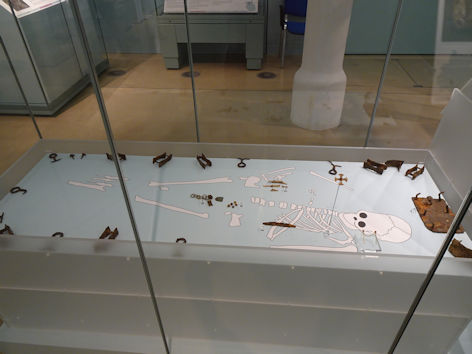
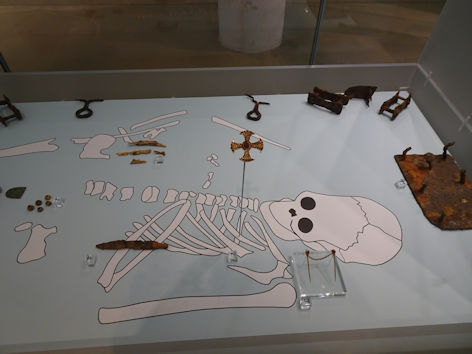
Media coverage
BBC Cambridgeshire, 16 March 2012
The Guardian, 16 March 2012
BBC, 1 February 2018
Cambridge News, 1 February 2018
The Guardian, 1 February 2018
Cambridge Independent, June 2023
BBC, June 2023